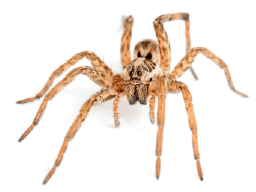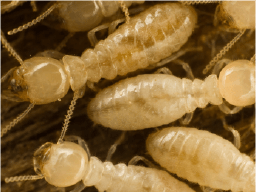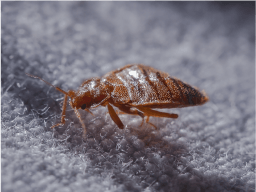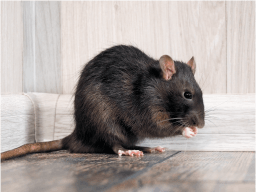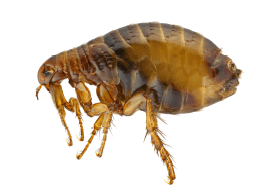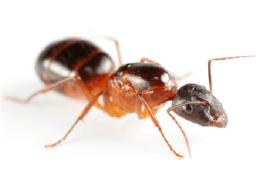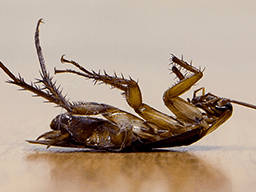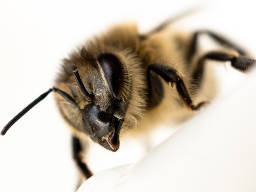Beetles vs Cockroaches: What Are the Differences?
by Alex Schnee | February 19, 2025 | Blog

If you’ve spotted insects in your home or yard, you might be wondering whether you’re dealing with beetles or cockroaches. While these pests might look similar at first glance, they have distinct characteristics and behaviors. Understanding these differences is crucial for implementing effective control measures and protecting your home from potential damage.
What are beetles?
Beetles belong to the order Coleoptera, the largest order of insects. These diverse creatures can be found in almost every habitat, from homes to gardens. While many beetles are beneficial, serving as pollinators or predators of harmful insects, some species can become pests.
Common household pest beetles include carpet beetles, wood-boring beetles, and pantry beetles that infest stored foods. Unlike cockroaches, most beetles don’t actively seek out human habitations, though some species can accidentally find their way indoors.
What are cockroaches?
Cockroaches are highly adaptable insects belonging to the order Blattodea. These persistent pests have evolved to thrive in human environments, making them particularly problematic as household pests.
They’re primarily nocturnal scavengers that can feed on virtually any organic matter. Common species include German, American, and Oriental cockroaches. Unlike most beetles, cockroaches actively seek out human habitations for food, water, and shelter, making them more challenging to control.
What do beetles look like?
Beetles have hardened wing covers called elytra that protect their flying wings when not in use. These wing covers typically meet in a straight line down their back when closed. Their bodies can range from tiny (less than 1mm) to several inches long, depending on the species.
Most have distinctive antennae that can be club-shaped, feathered, or straight. Their colors vary widely, from dull brown to metallic green or iridescent. Most beetles have strong mandibles for feeding and six jointed legs.
What do cockroaches look like?
Cockroaches have flat, oval bodies with long, spiny legs and long antennae. Most common household species are reddish-brown to dark brown and measure between 1/2 to 2 inches in length.
They have two pairs of wings that lie flat against their back, though not all species can fly. Their heads are typically hidden beneath a shield-like pronotum. Unlike beetles, cockroaches have a more flexible body structure and can squeeze through incredibly small spaces.
What are some main differences between beetles and cockroaches?
Several key characteristics distinguish beetles from cockroaches. Beetles have hard wing covers that meet in a straight line, while cockroaches have more flexible wings that overlap. Beetles generally move more slowly and deliberately, while cockroaches are known for their quick movements and ability to flee rapidly.
Their behaviors differ significantly–most beetles don’t seek out human habitations, while cockroaches actively infest homes. Additionally, beetles typically have more specialized diets, while cockroaches are opportunistic scavengers that will eat almost anything organic.
What are more dangerous: beetles or cockroaches?
Cockroaches generally pose more significant health risks than beetles. They can spread numerous disease-causing organisms, including Salmonella, E. coli, and various parasites. Their droppings and shed skins can also trigger allergies and asthma, particularly in children. Their habit of moving between waste areas and food preparation surfaces makes them effective disease vectors.
Most beetles, on the other hand, pose minimal health risks to humans. While some species can damage property–such as carpet beetles destroying fabrics or wood-boring beetles damaging structural timber–they typically don’t spread diseases. Some beetles might become nuisance pests in pantries or gardens, but they rarely cause the same level of health concerns as cockroaches.
Lifecycle of a beetle
Most beetles undergo complete metamorphosis with four life stages: egg, larva, pupa, and adult. Females typically lay eggs near appropriate food sources for their larvae. The larval stage, often called grubs, can last several weeks to months depending on the species.
During this time, larvae feed and grow, molting several times. They then enter a pupal stage where they transform into adults. The entire process can take anywhere from a few weeks to several years, depending on the species.
Lifecycle of a cockroach
Cockroaches develop through three stages: egg, nymph, and adult. Females produce egg cases called oothecae, containing multiple eggs. These cases are often hidden in cracks and crevices. Nymphs emerge looking like smaller versions of adults and molt several times before reaching maturity.
This process typically takes 2-6 months depending on the species. Adults can live up to a year, with females capable of producing multiple egg cases throughout their lifetime.
How to know if you have a beetle infestation
Signs of beetle infestations vary depending on the species. For carpet beetles, look for damage to fabrics, furs, or other natural materials, along with small, round holes and shed larval skins. Pantry beetles might be noticed when you find small insects in stored foods, along with webbing or dust-like particles in infested products.
Wood-boring beetles often leave small, round exit holes in wood surfaces, along with powdery frass (wood dust) below these holes. You might also notice adult beetles near windows as they try to exit buildings. For some species, you might spot larvae, which often look like small grubs or caterpillars, in infested materials.
How to know if you have a cockroach infestation
Cockroach infestations often show several distinct signs. Look for dark, pepper-like droppings, particularly along walls and in cabinet corners. You might notice an oily, musty odor in heavily infested areas. Cockroach egg cases–small, brown capsules–might be found in hidden areas.
Live cockroaches seen during daylight often indicate a severe infestation since they typically hide during day hours. Look for smear marks along walls where they frequently travel and check for shed skins which look like lighter versions of the insects themselves. You might also notice damage to food packaging or book bindings.
Do you get rid of beetles and cockroaches the same way?
These pests require different control approaches due to their distinct behaviors and habitats. Beetle control often focuses on removing infested materials and preventing future infestations through proper storage methods.
Cockroach control typically requires a more comprehensive approach targeting hiding spots and entry points. For both pests, professional pest control services offer the most effective solutions, as they can identify the specific species and implement targeted treatment strategies.
How to prevent a beetle infestation
Preventing beetle infestations starts with proper storage and regular inspection of susceptible materials. For pantry beetles, store dry goods in sealed containers and regularly check stored foods for signs of infestation. For carpet beetles, regularly clean and vacuum areas where they might feed, including carpets, furniture, and stored fabrics.
Store natural-fiber clothing and materials in sealed containers with moth balls or cedar blocks. For wood-boring beetles, maintain proper moisture levels in wooden structures and treat or remove infested wood. Regular inspection of materials that might attract beetles can help catch problems early before they develop into full infestations.
How to prevent a cockroach infestation
Preventing cockroach infestations focuses on sanitation and exclusion. Seal all potential entry points around pipes, utilities, and foundations. Fix leaky pipes and eliminate moisture sources that attract cockroaches. Keep food in sealed containers and clean up spills immediately. Regular cleaning, including vacuuming and proper garbage disposal, helps eliminate food sources.
Store recycling outside when possible and keep garbage in sealed containers. Reduce clutter that provides hiding spots, particularly in kitchens and bathrooms. Regular inspection of packages and boxes before bringing them inside can prevent inadvertent introduction of cockroaches. Remember to maintain clean drains and regularly inspect under appliances and behind cabinets where cockroaches commonly hide.
If you’re seeing beetles or cockroaches around your property, don’t wait to take action. You’ll want to contact one of our Top Pest Control Professionals today for a free inspection and customized treatment plan! Our experts will identify which pest you’re dealing with and implement targeted control methods to protect your home from these unwanted insects.





